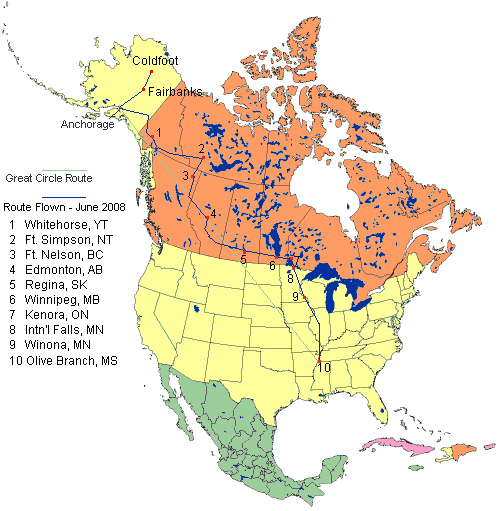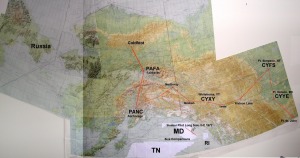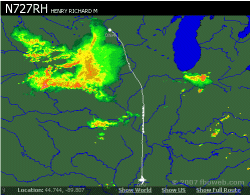


| From | To | Flight | Block | Airway N. Miles | PANC Anchorage, AK | CYXY Whitehorse, YT | 4+10 | 4+27 | 518 | CYXY Whitehorse, YT | CYFS Ft. Simpson, NT | 2+49 | 3+08 | 441 | Total for Day 1 | 6+59 | 7+35 | 959 |

| From | To | Flight | Block | Airway N. Miles | CYFS Ft. Simpson, NT | CYYE Ft. Nelson, BC | 1+17 | 1+25 | 185 | CYYE Ft. Nelson, BC | CYXD Edmonton, AB | 3+06 | 3+12 | 476 | CYXD Edmonton, AB | CYQR Regina, SK | 2+52 | 3+06 | 450 (est.) | Total for Day 2 | 7+15 | 7+43 | 1111 | Total for Trip | 14+14 | 15+18 | 2070 |

| From | To | Flight | Block | Airway N. Miles | CYQR Regina, SK | CYAV Winnipeg, MB | 1+51 | 2+09 | 298 | CYAV Winnipeg, MB | CYQK Kenora, ON | 0+44 | 0+55 | 103 | CYQK Kenora, ON | KINL Intn'l Falls, MN | 0+36 | 0+43 | 84 | KINL Intn'l Falls, MN | KONA Winona, MN | 1+50 | 1+57 | 288 | Total for Day 3 | 5+01 | 5+44 | 773 | Total for Trip | 19+15 | 21+02 | 2,843 |

| From | To | Flight | Block | Airway N. Miles | KONA Winona, MN | KOLV Olive Branch, MS | 3+39 | 3+52 | 565 | Total for Day 4 | 3+39 | 3+52 | 565 | Total for Trip | 22+54 | 24+54 | 3,408 NM 3,926 SM |
Total including Trip to Coldfoot | 28+56 | 31+47 | 4,240 NM 4,880 SM |